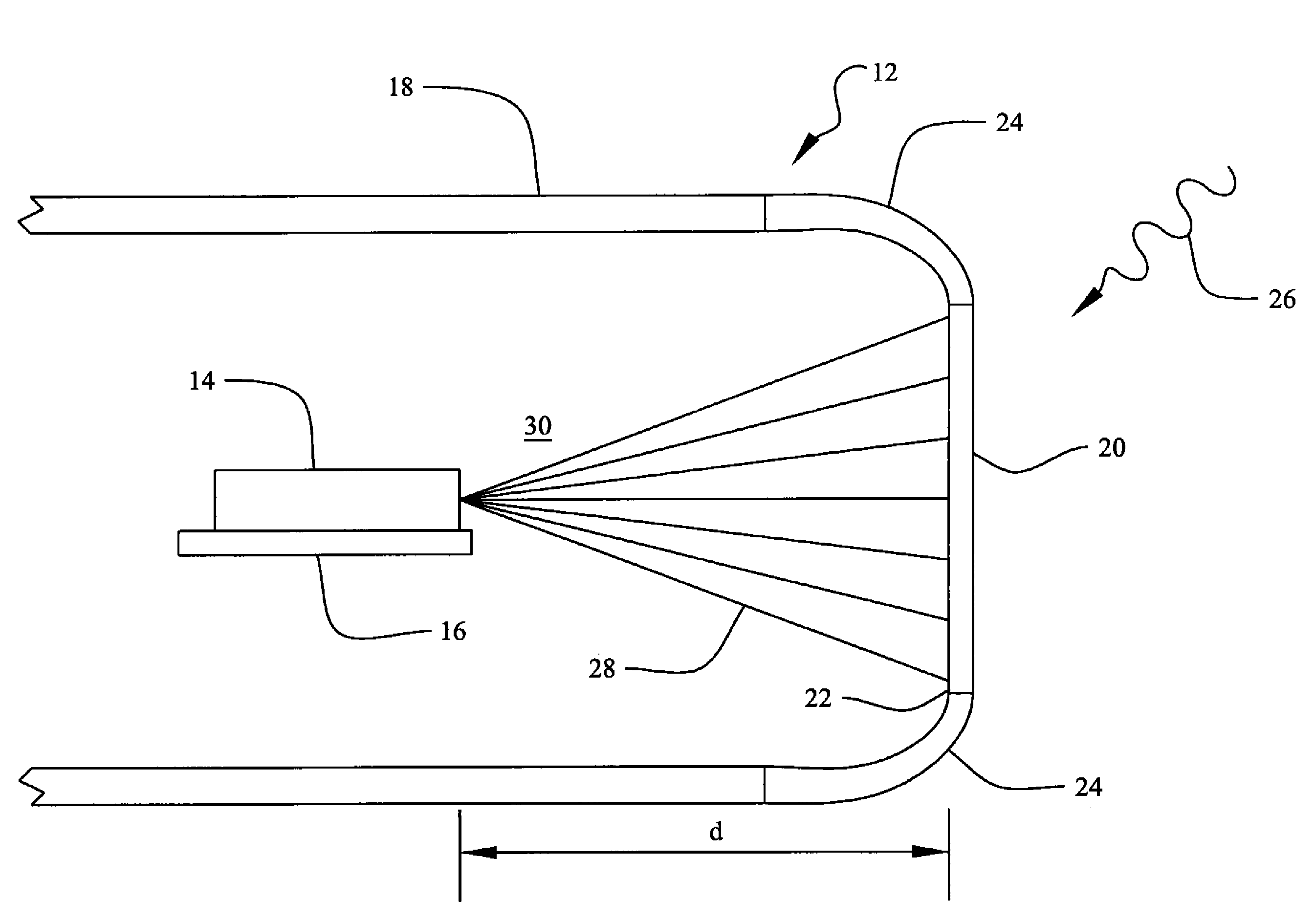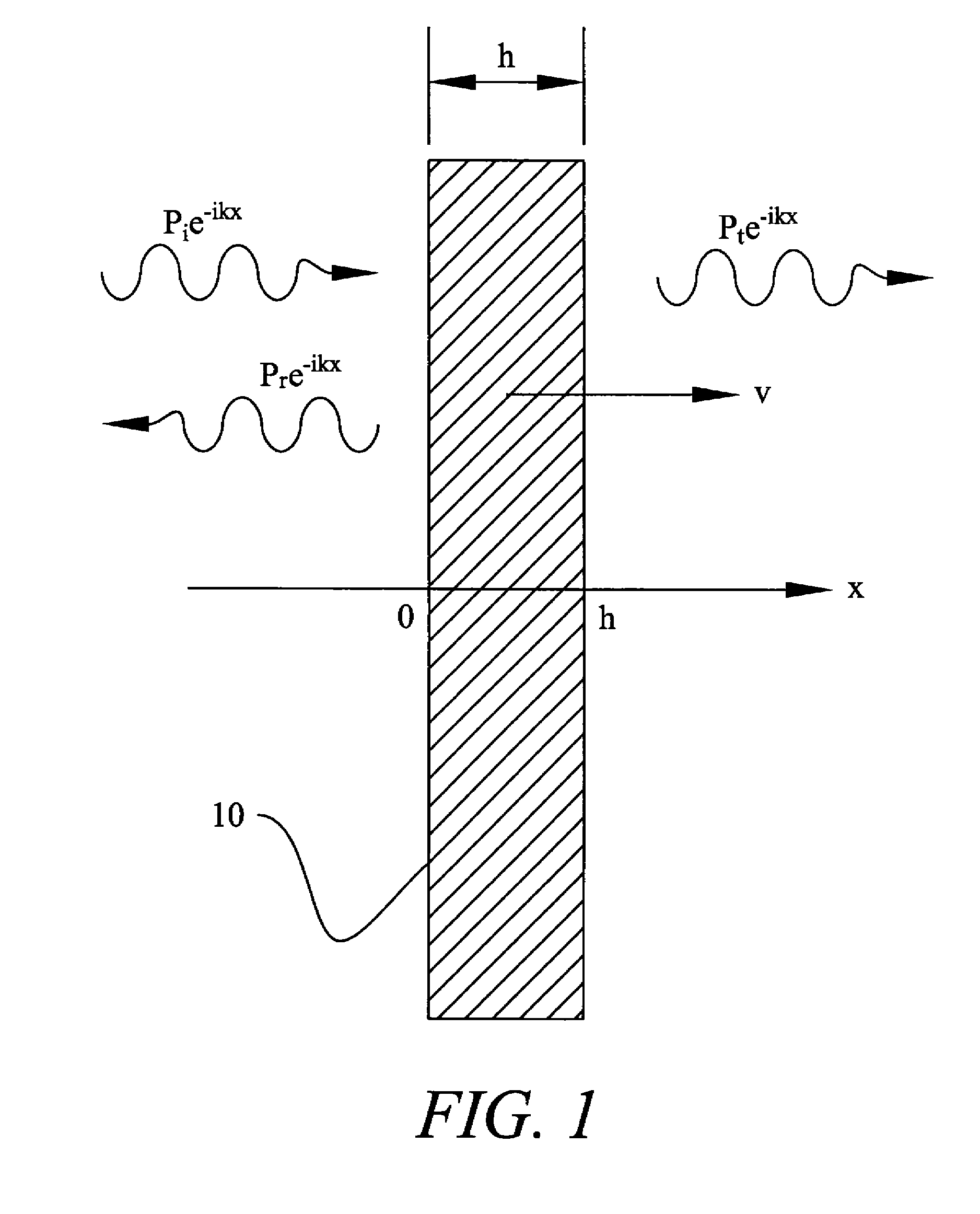Adaptive high frequency laser sonar system
a high-frequency laser and sonar technology, applied in the field of acoustic sensors, can solve the problems of limited acoustic frequencies utilized by the array, unsuitable for use as an underwater acoustic sensor, and the inability of laser interferometers to scan the boundary surface, so as to prevent the noise of the housing
- Summary
- Abstract
- Description
- Claims
- Application Information
AI Technical Summary
Benefits of technology
Problems solved by technology
Method used
Image
Examples
Embodiment Construction
[0023]In its simplest form, Euler's equation for a propagating harmonic plane wave reduces to
p(x,t)=ρcv(x,t), (1)
where p(x,t) is acoustic pressure and ρcv(x,t) is the product of the medium's characteristic impedance ρc and acoustic particle velocity v(x,t). Thus, measuring acoustic pressure with an array of conventional hydrophones is equivalent to measuring acoustic particle velocity with an array of velocity sensors. This equivalence has been the basis for sonobuoy designs for decades and, more recently, for innovative submarine sonar systems.
[0024]Referring now to FIG. 1, consider a thin plate (or membrane) of thickness h, insonified by an acoustic plane wave of amplitude Pi as seen in FIG. 1, with reflected and transmitted amplitudes, Pr and Pt, respectively. The plate is thin relative to the incident acoustic wavelength, that is, kh<<1, where k is the acoustic wave number, and the harmonic time dependency is ignored. Given this, the plate's velocity can be assumed constant thr...
PUM
 Login to View More
Login to View More Abstract
Description
Claims
Application Information
 Login to View More
Login to View More - R&D
- Intellectual Property
- Life Sciences
- Materials
- Tech Scout
- Unparalleled Data Quality
- Higher Quality Content
- 60% Fewer Hallucinations
Browse by: Latest US Patents, China's latest patents, Technical Efficacy Thesaurus, Application Domain, Technology Topic, Popular Technical Reports.
© 2025 PatSnap. All rights reserved.Legal|Privacy policy|Modern Slavery Act Transparency Statement|Sitemap|About US| Contact US: help@patsnap.com



